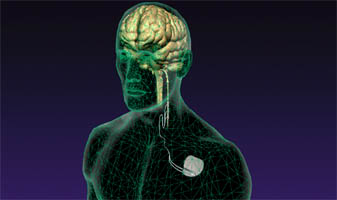Prescrire Int. 2011 May;20(116):128-33.
Treatment-resistant depression: no panacea, many uncertainties. Adverse effects are a major factor in treatment choice.
[No authors listed]
Abstract
At least 50% of patients with depression do not enter remission after several weeks of antidepressant therapy. To determine the treatment options and their respective risk-benefit balances in this setting, we reviewed the literature using the standard Prescrire methodology. Clinical trials and epidemiological studies show that depression should only be considered drug-resistant after at least 6 weeks of therapy. After assessing residual symptoms and their impact on the patient's quality of life, a search should be made for factors responsible for the persistence of depression, such as the patient's environment, a psychiatric or somatic disorder, and drug intake or addiction. Increasing the dose of the first-line antidepressant is only based on weak evidence. Trials comparing continuing the first-line antidepressant versus switching to another pharmacological class have yielded conflicting results. A switch may benefit some patients, but the elimination half-life of the discontinued drug must be taken into account to limit the risk of interactions during the transition. Combining two antidepressants mainly increases the risk of adverse effects, without a tangible clinical benefit. Two meta-analyses suggest that adding a so-called atypical neuroleptic to ongoing antidepressant therapy leads to 1 extra remission per 7 to 10 treated patients, but also to treatment cessation due to adverse effects in 8% to 9% of cases. Older neuroleptics have not been properly evaluated in this setting. Comparative trials suggest that lithium may have a certain antidepressant effect in this setting, but there is no firm evidence that adding lithium increases the chances of remission. Lithium has a narrow therapeutic margin and overdose can be fatal; the blood lithium concentration must therefore be monitored. Adding an antiepileptic or a psychostimulant is more harmful than beneficial. Adding a thyroid hormone, a benzodiazepine, buspirone or pindolol has no proven antidepressive effect. Four trials, each including fewer than 20 patients, have assessed the efficacy of psychotherapy in patients with treatment-resistant depression. Two of them provided positive results. Electroconvulsive therapy is probably effective for some patients with refractory depression but it necessitates general anaesthesia and carries a risk of memory disorders. Vagal nerve electrostimulation has no proven efficacy. Transcranial magnetic stimulation seems to have some efficacy and few adverse effects, but its optimal modalities remain to be determined. In practice, when the patient and doctor decide to attempt second-line therapy for treatment-resistant depression, adverse effects must be taken into account in the choice of drug(s). Maintaining a good quality relationship between patient and doctor may be more important than attempting to obtain remission "at any cost".- PMID:
- 21648180
- [PubMed - indexed for MEDLINE]
